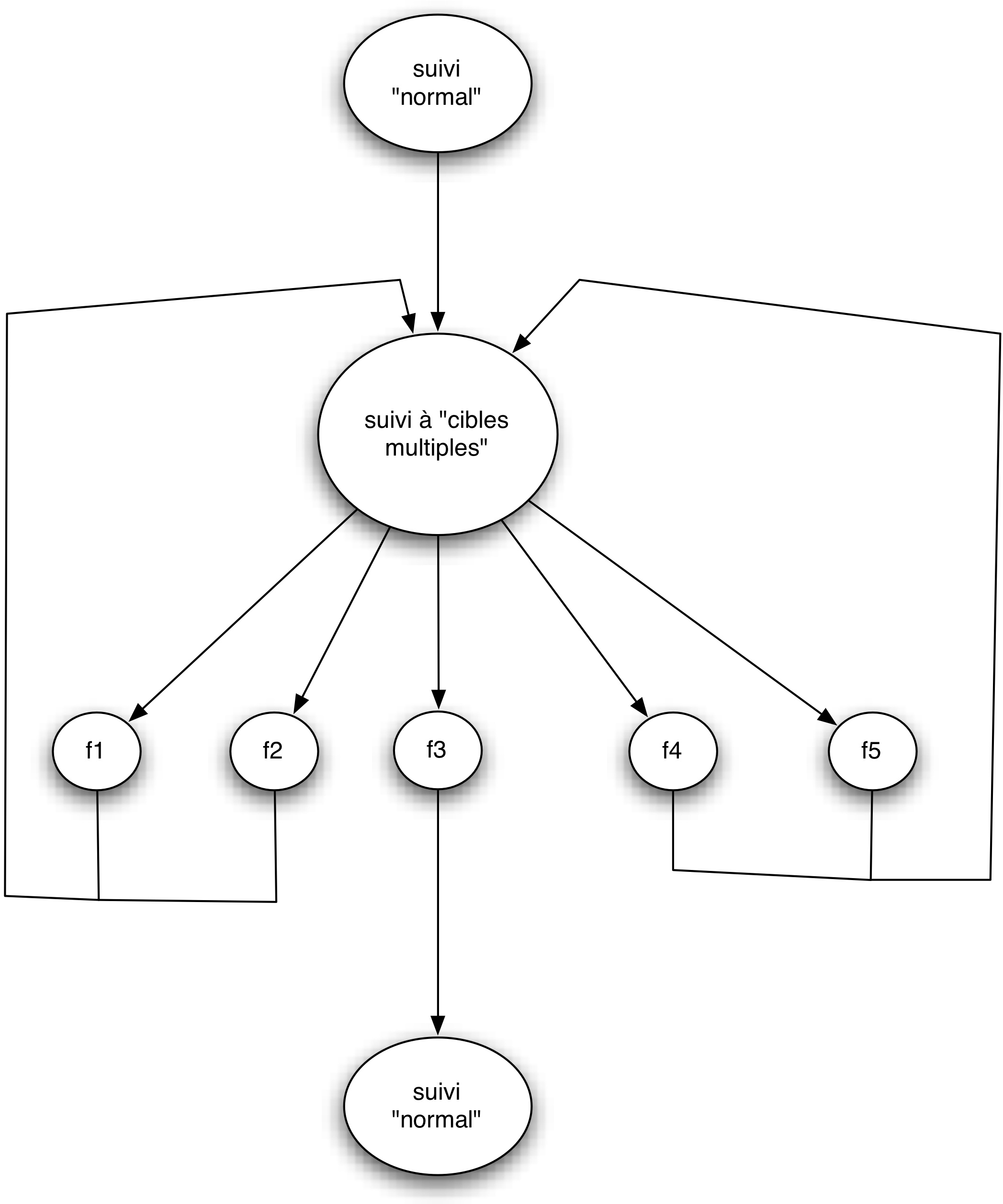What you are describing is what exactly the jump attribute does in Antescofo. Basically, if you declare a JUMP on an event, it tells Antescofo that from that event (besides the usual possibility of going forward) the performer can also jump to another place in the score, on an event where the jump is pointing to. Here is a small example:
NOTE C4 1.0 f1 @jump f2 f3
NOTE D4 1.0
...
TRILL (C5) 1.0 f2 @jump f1 f3
NOTE D5 1.0
...
CHORD (C6 E6) 1.0 f3 @jump f1 f2
...
Explanation: The first note in the above score has the label “f1” and besides going forward it has the possibility of jumping to events with label “f2” and “f3”. Samething with the TRILL with label “f2” that can jump optionally to either f1 or f3 etc. This way, you can dispatch your electronic actions without needing whenever construct as in your original message.
Note 1: When you use jumps, you need to make sure that the events are mutually distinctif. Said otherwise: If events with label f2 and f3 are the same, it is impossible to distinguish where to go… .
Note 2: Jumps can be used to create scores with repetitions and Da Capo Al Fin patterns as seen in classical music. They have also been succesfully used in Open Scores in atleast two Philippe Manoury pieces.

